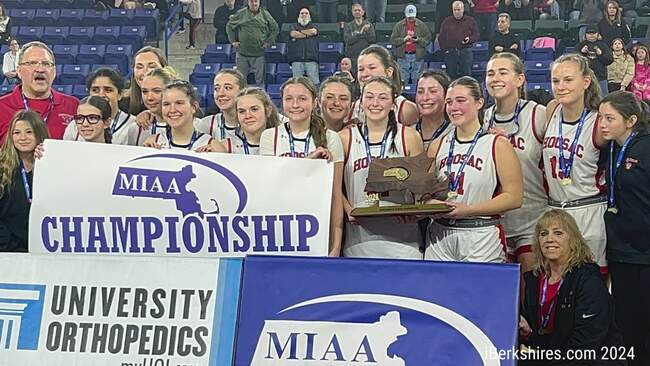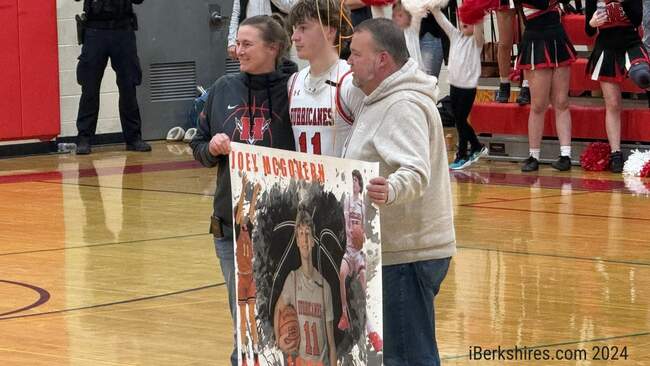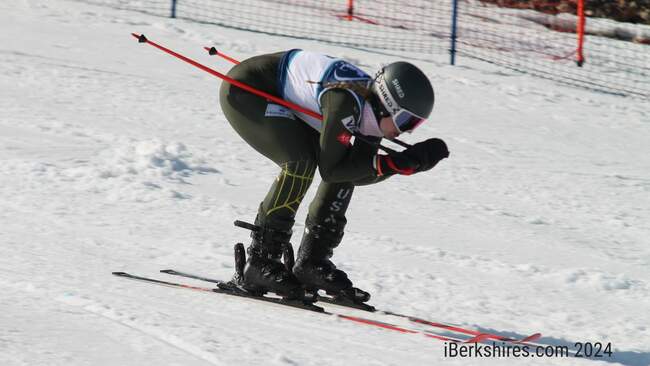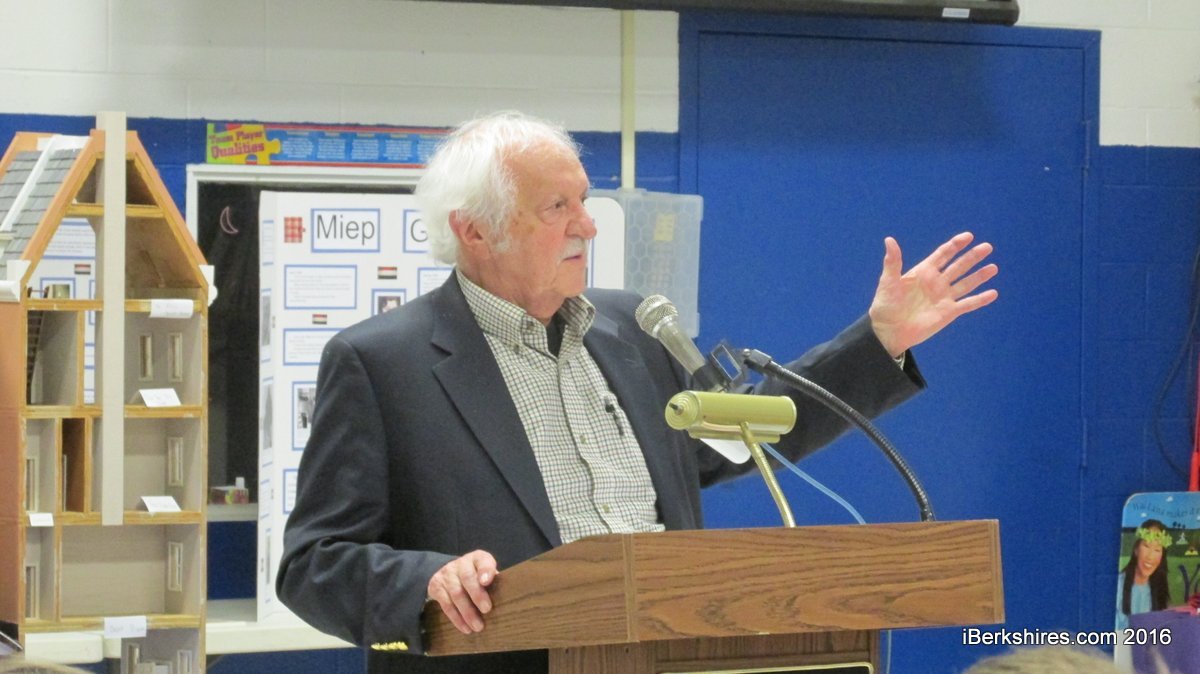
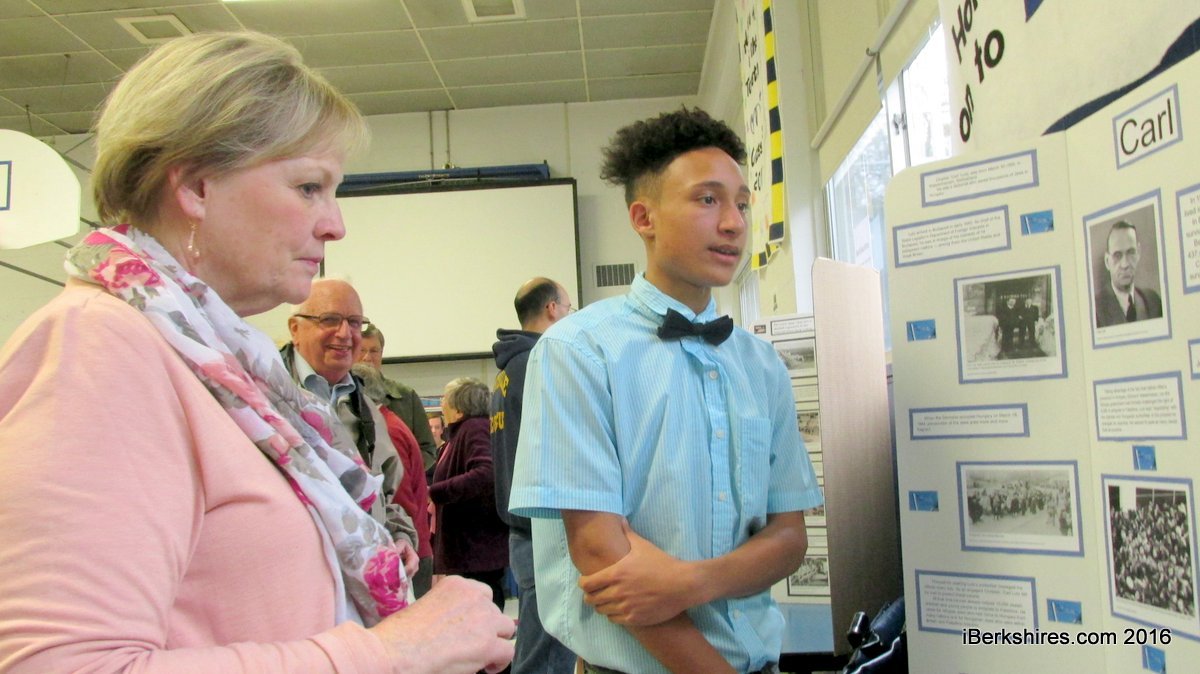
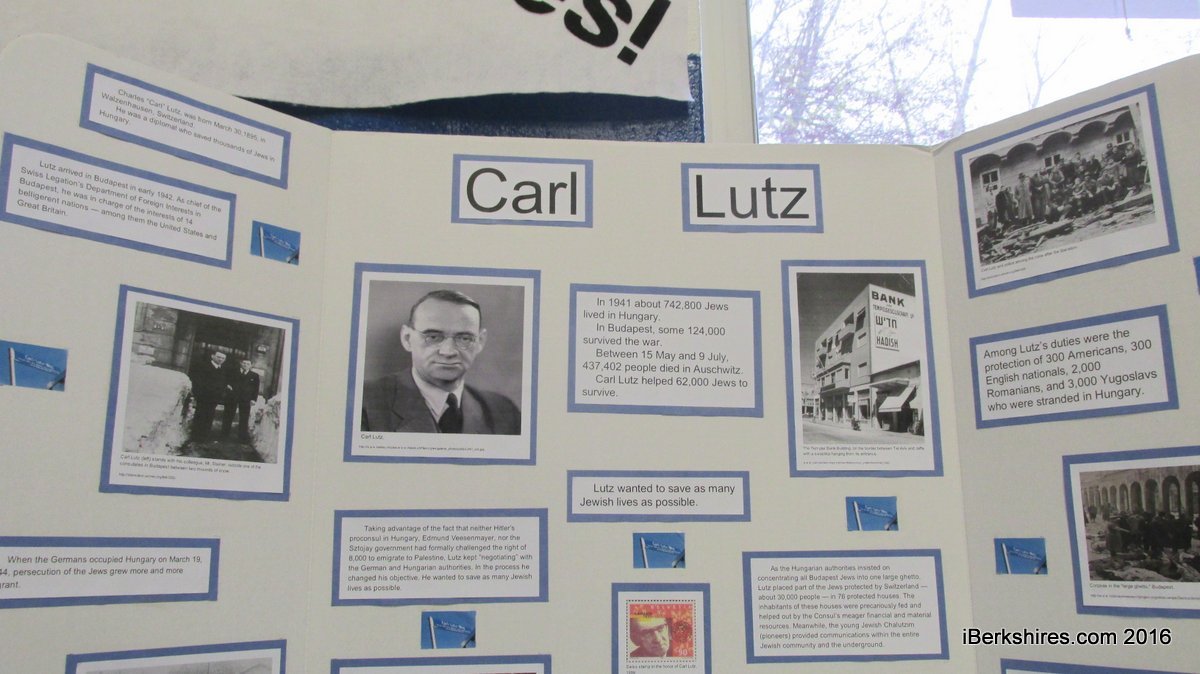
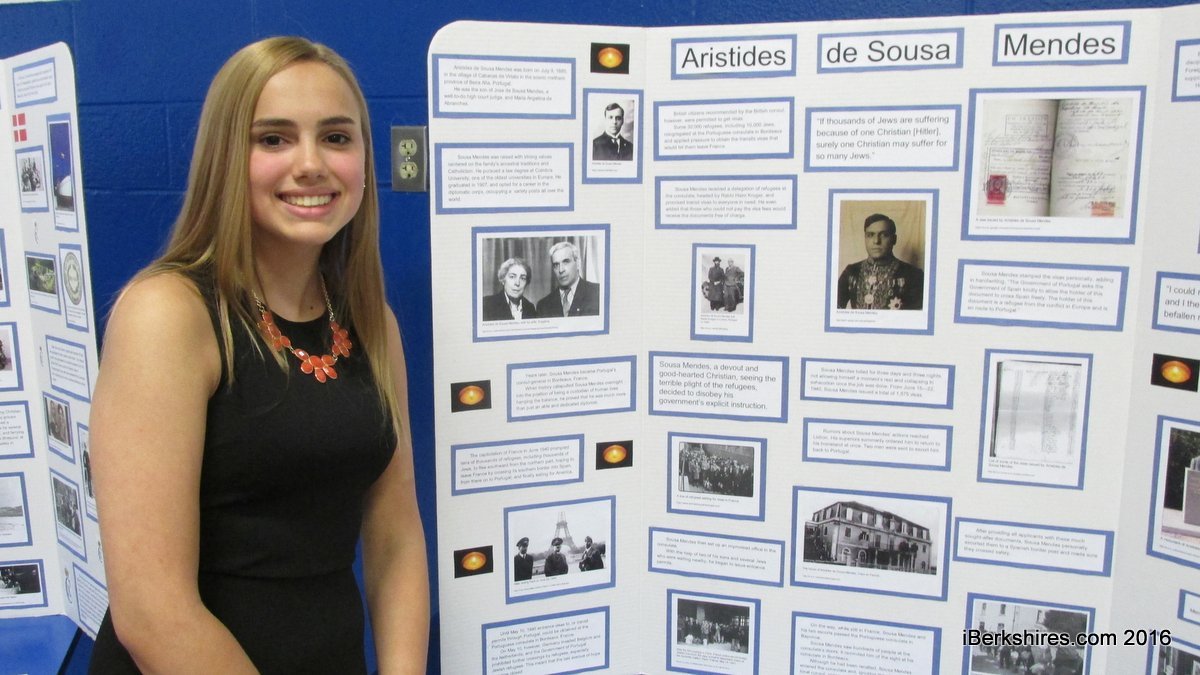
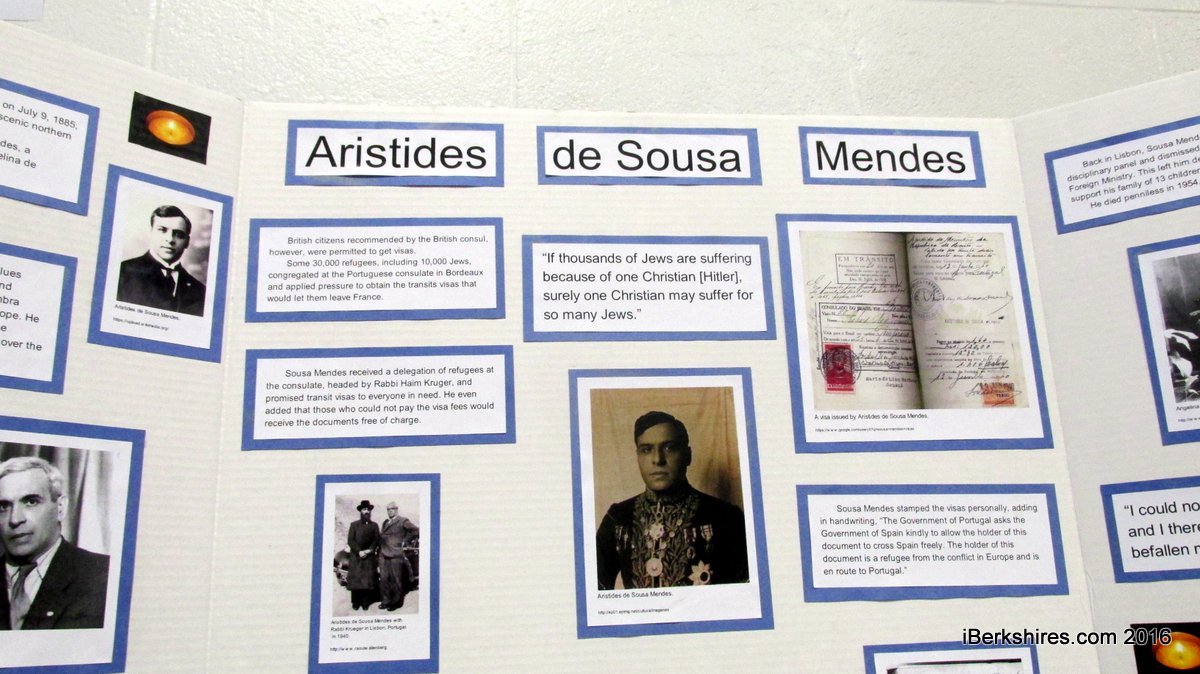
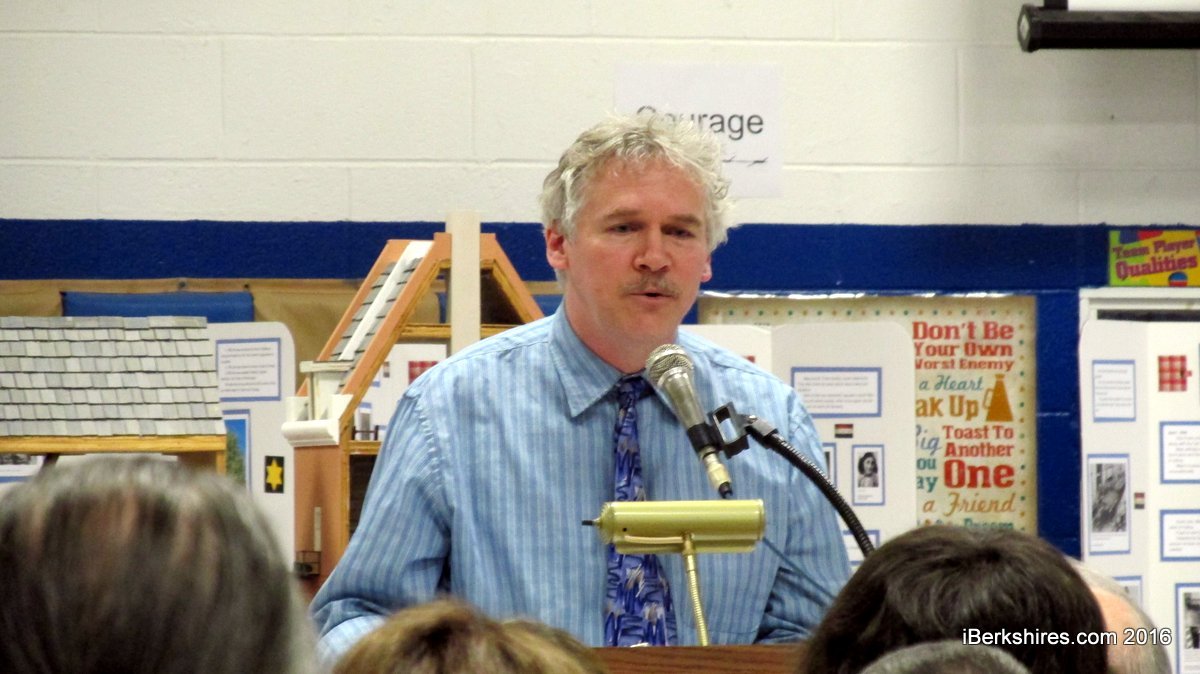
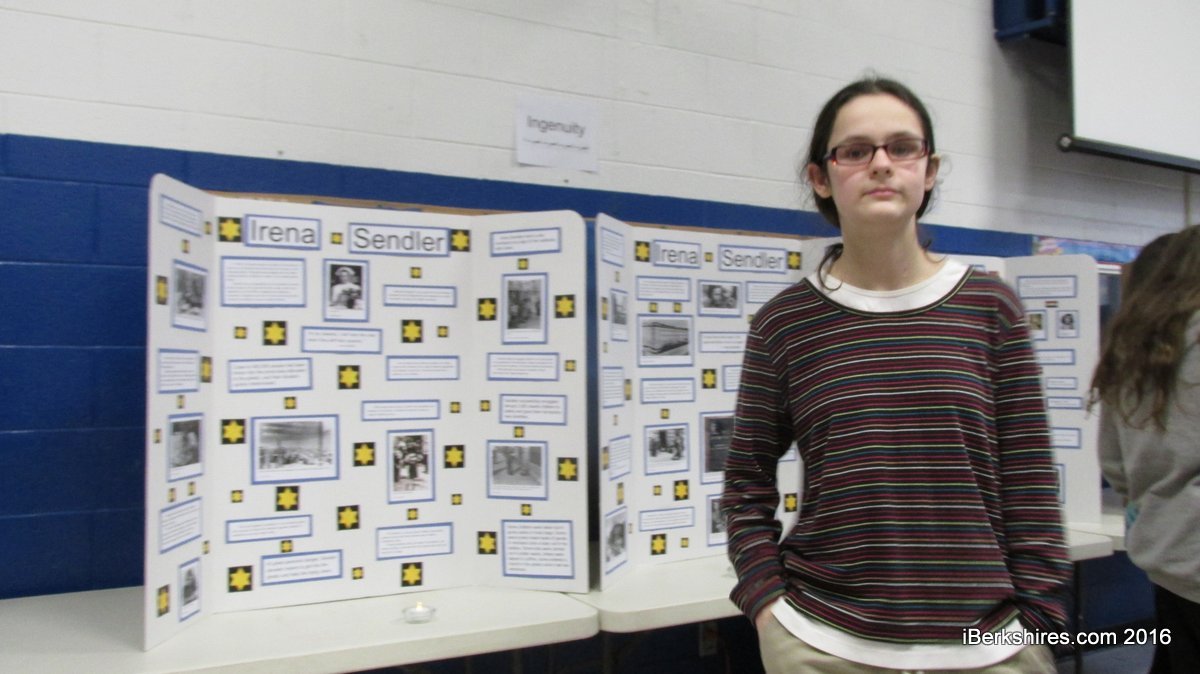
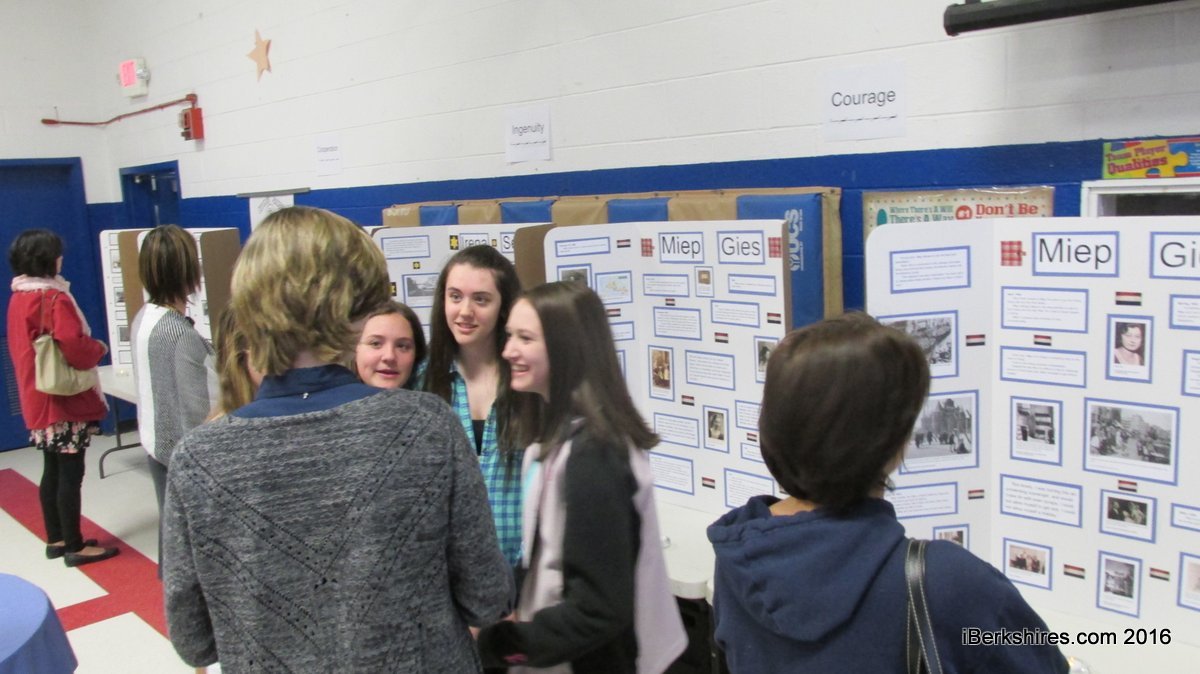
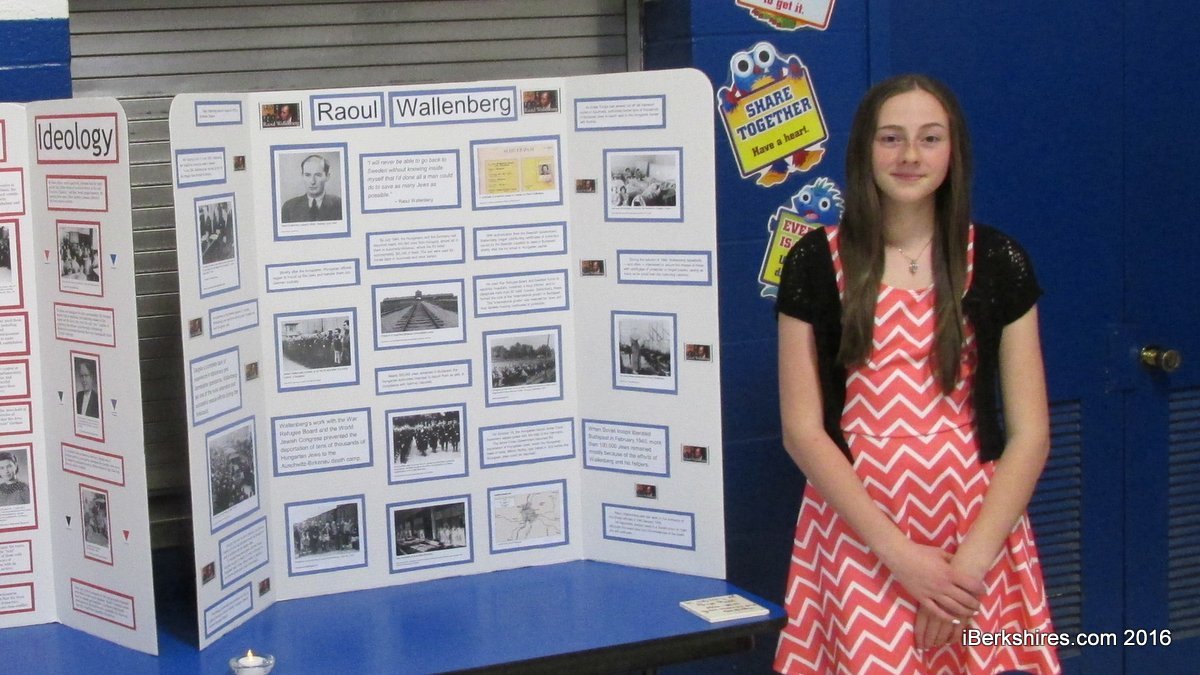
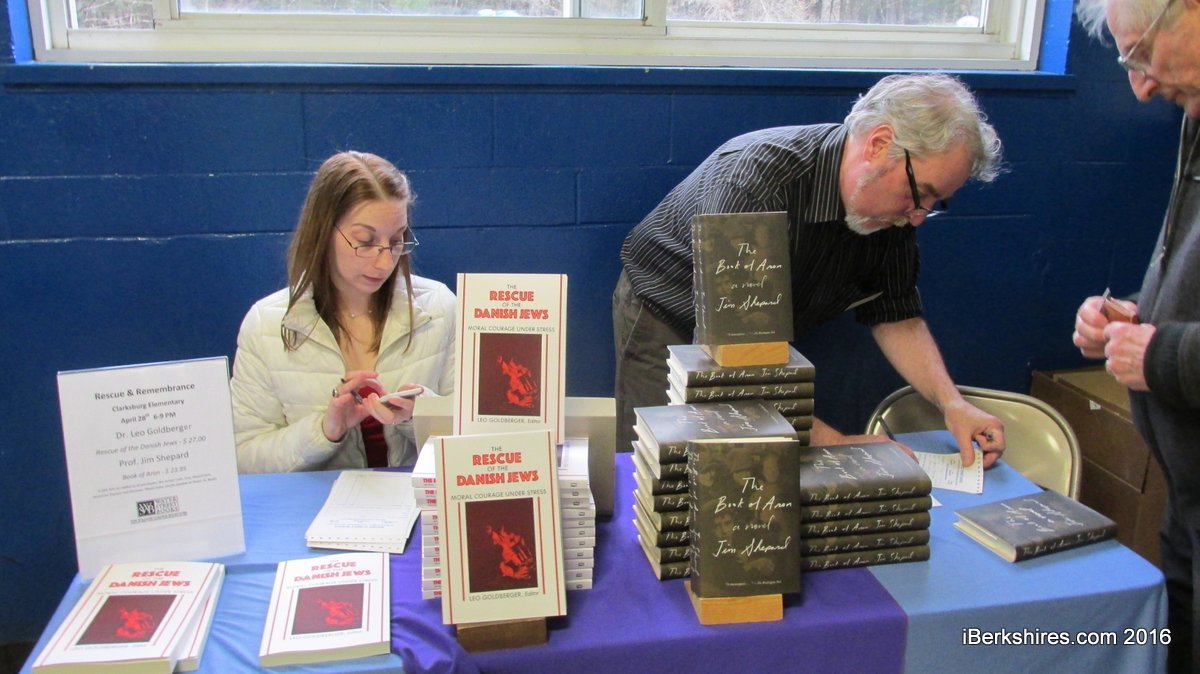
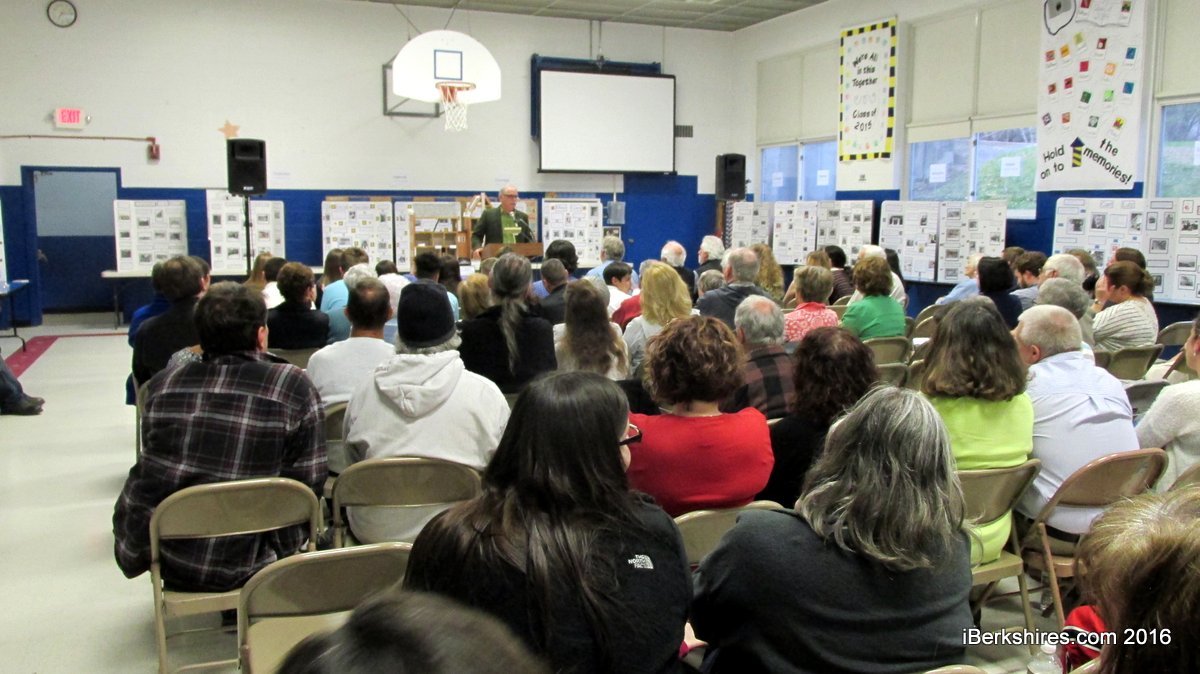
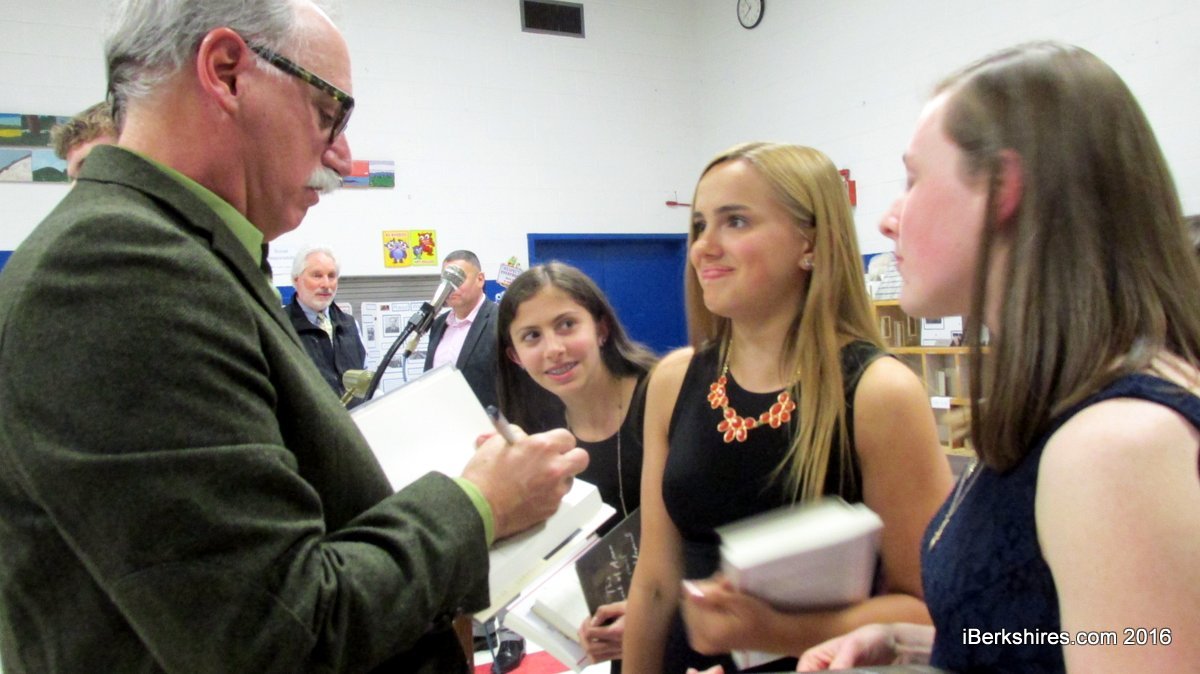
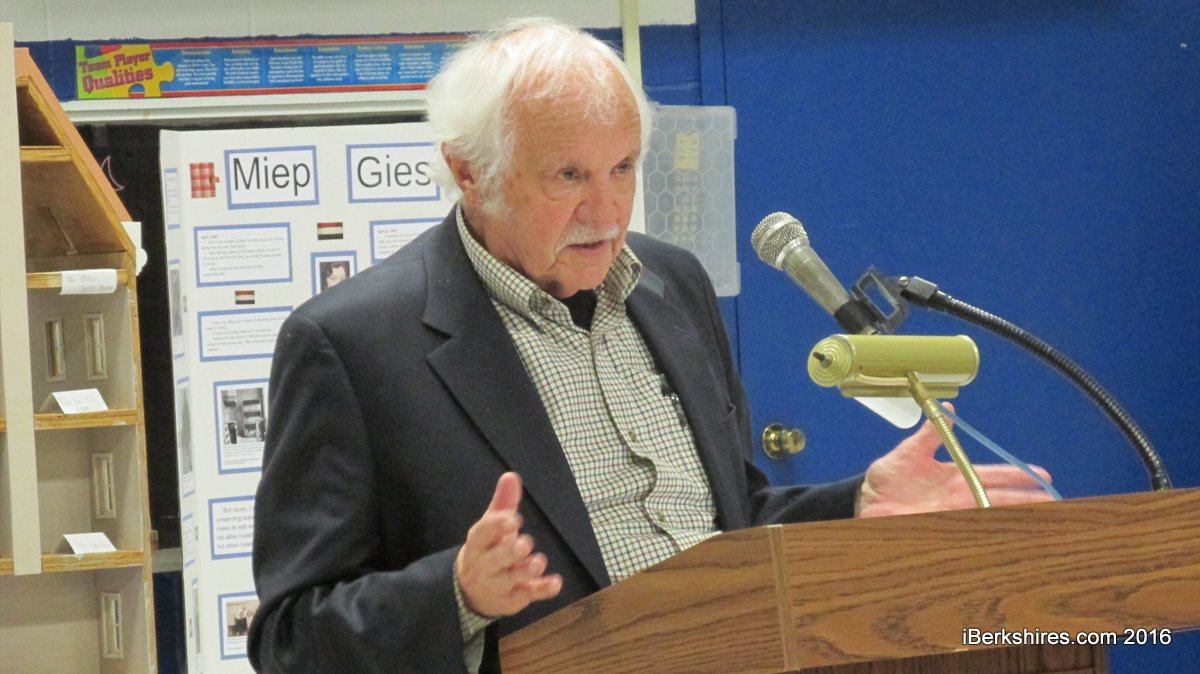
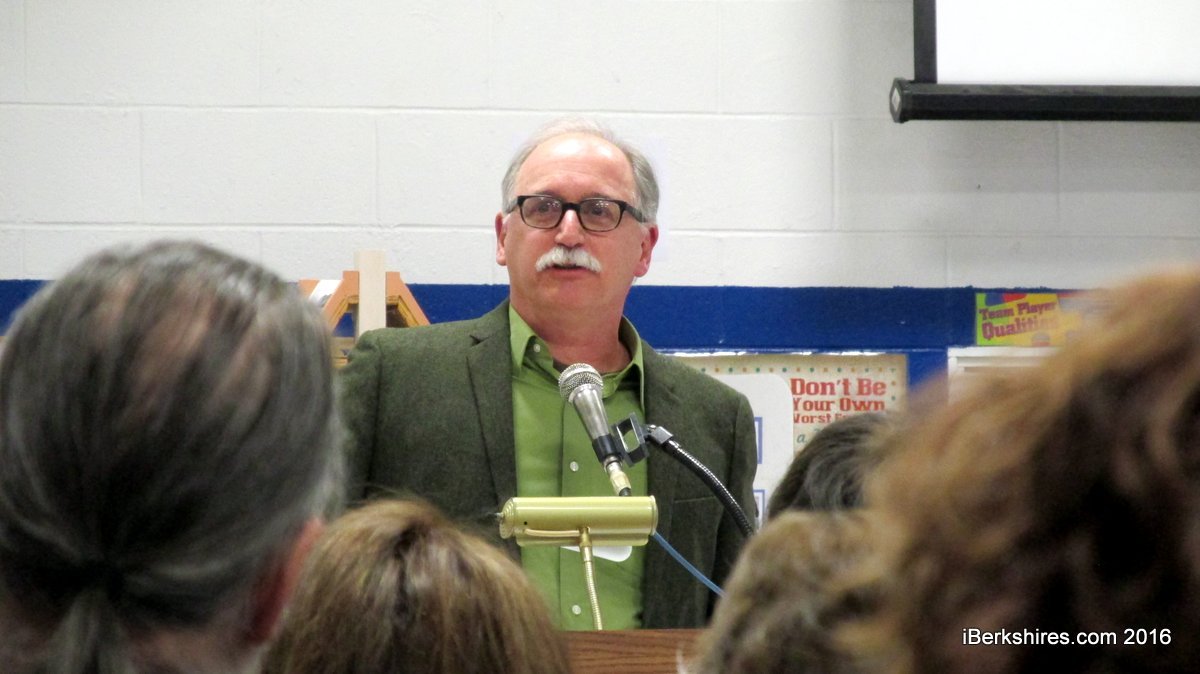
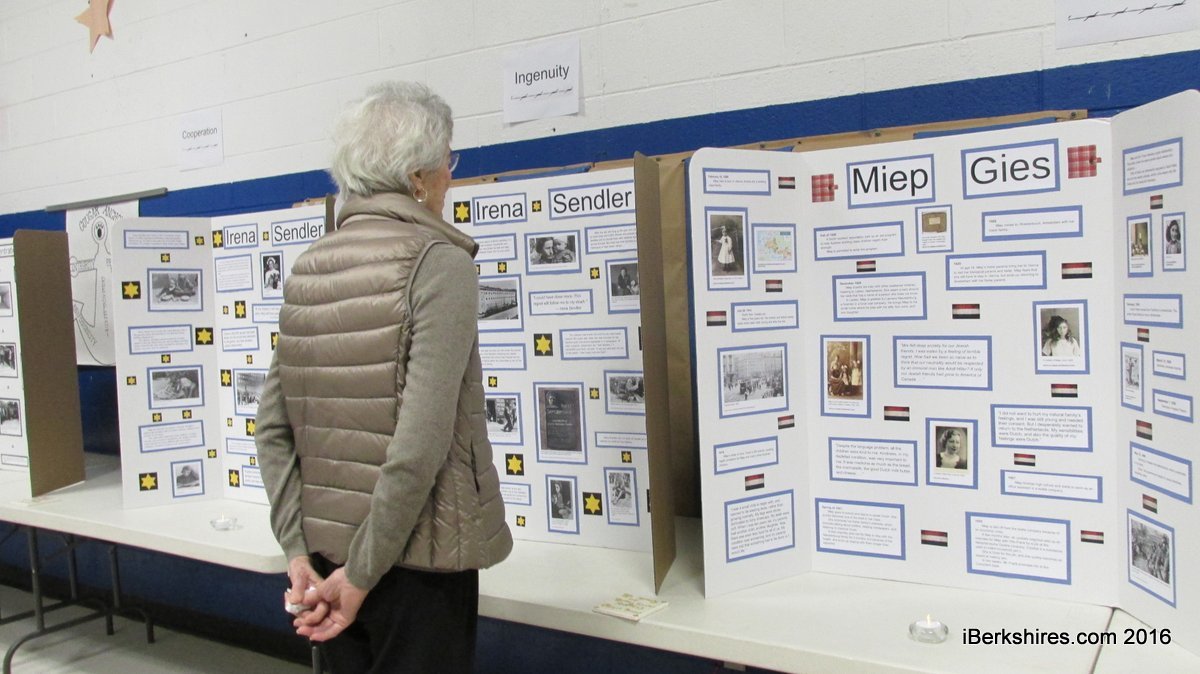
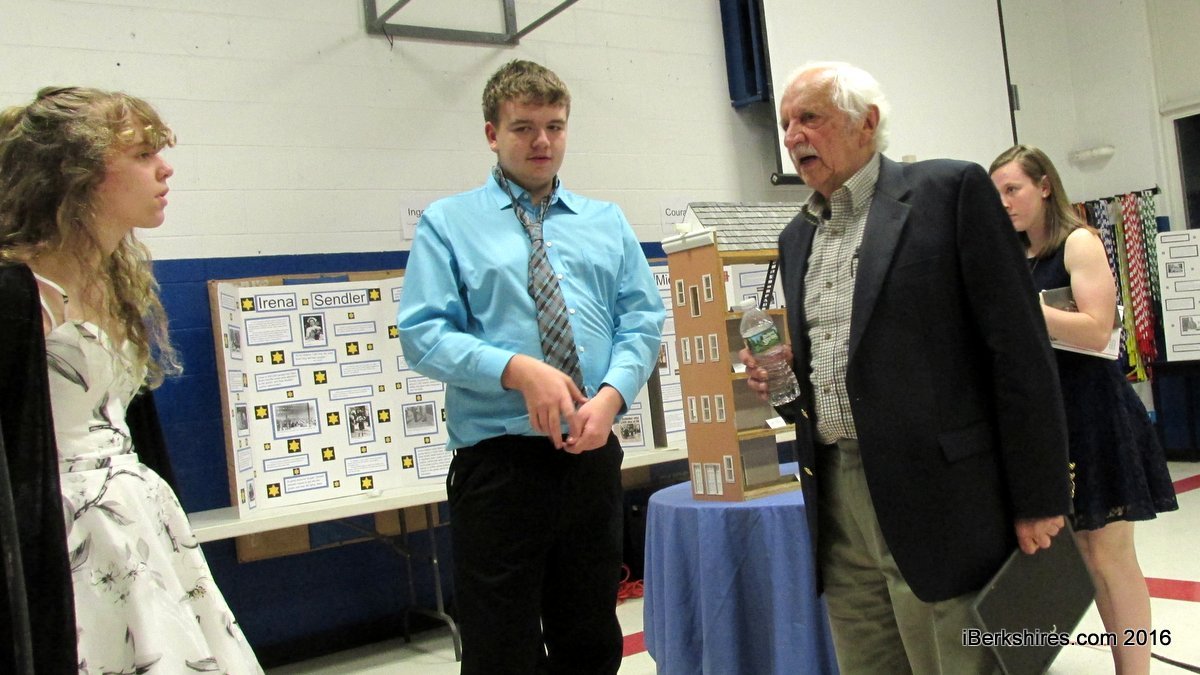
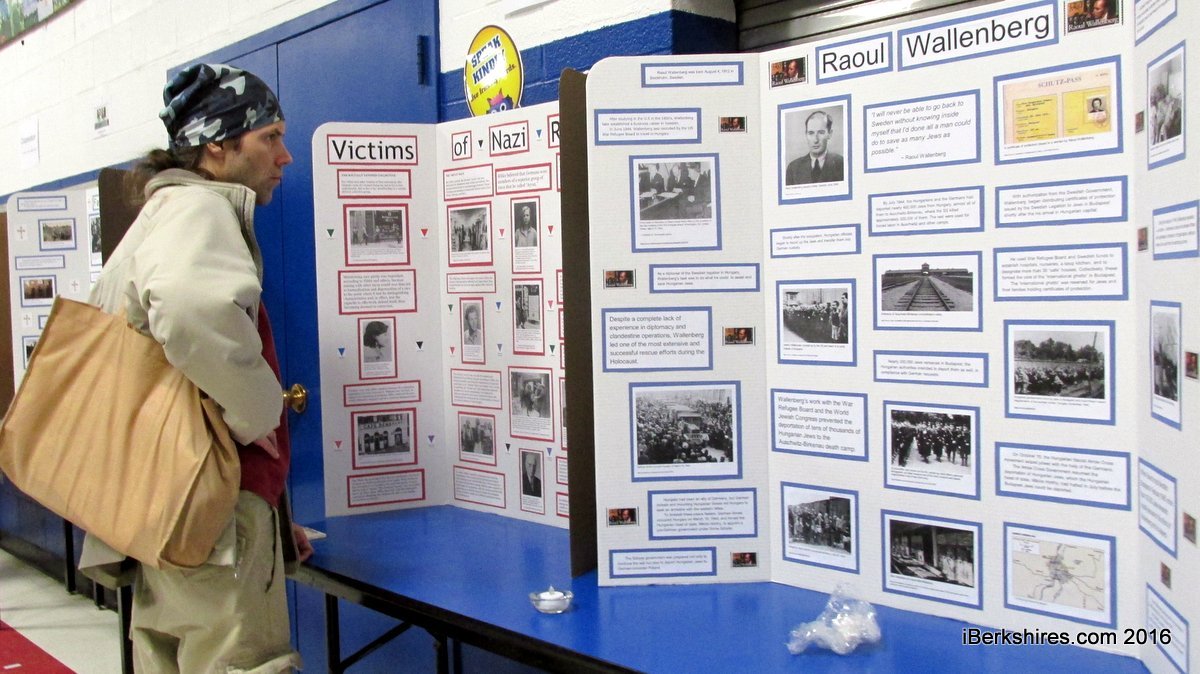
Clarksburg Holocaust Program Remembers the Rescuers
CLARKSBURG, Mass. — Clarksburg School's Holocaust Studies program has in the past explored the roots of genocide, discrimination and prejudice, the failure of political will to protect individual rights, and the rise of Nazism.
For its 11th annual exhibit on Thursday night, this year's eighth-grade class tackled a subject of hope through their research and the evening's two guests who offered a look at the Holocaust through a literary perspective and from personal experience.
With the theme "Rescue and Remembrance," the 15 students told the stories of the saviors, including Miep Gies, Raoul Wallenberg, and Chiune Sugihara, who had risked their lives and careers to help Jews escape Nazi Germany's "Final Solution." Recognized as the "Righteous Among the Nations," many defied their own governments to help those fleeing the Nazis.
"It is important when discussing the Holocaust to keep a dual memory," said Leo Goldberger, who spoke of his escape from Denmark, detailed in his book "The Rescue of the Danish Jews: Moral Courage Under Stress." "The worst, the unspeakable terror, the genocide — essentially that is the Holocaust. ...
"And there is the light occasionally shown by these wonderful people that we are seeing today described. The rescuers."
Goldberger, a psychology professor emeritus at New York University, has studied stress and trauma on the psyche. He has written and co-authored a number of books and papers, and has been a consultant to Holocaust resource centers.
He told the room that he'd felt a bit ashamed to be called a survivor because he had escaped to Sweden while so many others had ended up in concentration camps. In the years after the war, there had been far greater focus on the remembering the millions killed. It was something of a way to counter the "tons of stuff" about the Nazi leaders.
"We were fascinated by the bad guys, which made the victims feel terrible," he said. "They didn't think anybody cared."
As the focus shifted, more survivors began speak about their experiences. And then the rescuers began to be more fully recognized.
Goldberger credits two rescuers in saving his family, one of whom was featured in Thursday's exhibit and another he's asked Yad Vashem, the World Holocaust Remembrance Center, to acknowledge without luck.
His family had moved from Czechoslovakia to Denmark when Germany occupied the small nation in 1940. Goldberger was 10 years old but retains a clear memory of the event.
"I heard the drone of airplanes overhead ... the sky was darkened with airplanes," he said. "It was April the 9th, 1940."
Denmark with its tiny army and 13 planes was no match for the German juggernaut and surrendered within hours — but with the caveat that it would retain its sovereignty as long as it did not resist. Danes went about their business for most of the next three years until resistance fighters became too active for the Germans to ignore.

There was always the fear that the Nazis would strike out against the Danish Jewish community. One night, Goldberger heard the "menancing sound of gun butts against the front door" and feared the German soldiers would break down the door and take his father away. But an upstairs neighbor leaned out the window and threatened to call the police, confusing the soldiers. The neighbor then told the soldiers that the Goldbergers were at their "summer home" and they went away.
Plans were made to round up the country's Jews around Rosh Hashanah, but a German military attache with the Nazi embassy in Copenhagen, Georg Duckwitz, alerted his Danish friends and the resistance. Goldberger couldn't fathom why Duckwitz, who was close to his Nazi boss, would to do that: "He had a heart."
More than 6,000 Jews were evacuated to Sweden by various means with the help of their fellow countrymen before they could be deported.
For the Goldberger family, that was made possible by a Lutheran minister by the name of Henry Rasmussen. Rasmussen provided the family with 20,000 kroners to take a boat to Sweden. The family was only able to take a few things with them and had to hide under a stinking fish tarp until the boat's captain could hail a Swedish fishing boat to take them the rest of the way.
Goldberger remembers Rasmussen apologizing profusely to his father. "As a Christian, I feel so guilty to what happened," he recalled the minister saying. He said Yad Vashem wouldn't recognize Rasmussen because his sect was trying to convert Jews.
"He was a good man," Goldberger said. "He wasn't trying to convert my father or us."
Seventy years later, he still remembers the rage and anger that overcame him as his family huddled in the bushes on a beach, waiting for the boat to take them away.
"What the hell did I ever do, or my parents," he said. "It didn't make sense to me."
It didn't make sense to others in the war either. Carl Lutz is credited with saving more than 62,000 Jews during his time as Swiss vice consul in Budapest, Hungary.
Lutz was the subject of Darnell Henry's research, and he was struck by Lutz's bravery. In one instance, he had interfered with a firing squad and jumped in to save a woman who had been shot, declaring her under the protection of Switzerland in defiance of the killers.
"He had the courage to save that many Jews," he said. "He could have been killed."
Aristides de Sousa Mendes, a Portugese diplomat stationed in Bordeaux in 1940, lost his post and livelihood when he defied his government by issuing visas during the surrender of France. Among those issued were to artist Salvador Dali and "Curious George" creators H.A. and Margret Rey.
"Between June 15 and the 22 (as the surrender was going into effect), he issued almost 1,600 visas and that number continues to grow as they find more and more evidence," said student Molly Wojnicki. "He continued to issue visas because he believed it was the right thing to do."
Finding strength in his Catholic faith, he also issued visas for free and often escorted the emigrants to their transport. For that, he was recalled, stripped of his title and punished, and died in 1954. Molly said one if his quotes stayed with her: "If a thousand Jews are suffering because of one Christian surely one Christian can suffer for so many Jews." His surviving 13 children spent years raising awareness of his sacrifice.
"I think what I really loved about him was the fact he did an amazing thing but he had to rebel to do that," she said. "He was such a nice man."
Jim Shepard, the literary portion of the evening, lightened the mood as he took questions after reading from his most recent award-winning book, "The Book of Aron."
The slim novel, at 220 pages, tells the story of educator and pediatrician Janusz Korczak, who ran an orphanage in the Warsaw Ghetto. When the Nazis began the elimination of the ghetto, Korczak chose to accompany his 150 charges to the gas chambers at Treblinka.
Described by Shepard as "Dr. Seuss, Dr. Spock and Garrison Keillor rolled together," Korczak (nee Goldszmit) was well known throughout Poland and Germany for his influence on education, his children's books and his frequent radio appearances.
But it's hard to have a saint at the center of a novel because there's little conflict, said Shepard, and so the book is narrated by a young Aron, somewhat of a ne'er do well who refuses to be won over Korczak.
"I'm much more drawn to the worms in my view ... the person with not much political power," said the writer who's explored the emotional state of the Creature From the Black Lagoon.
Despite the fictional narrator, the book is very much based on fact and actual persons. Korczak was straight with the children on where they were going, and the youngsters marched for hours through the ghetto — as its occupants watched them go by. Shepard said it's believed the taking of the children was the signal that no one was going to make it out alive and it helped to spark the uprising a few months later.
Teacher Michael Little, in introducing the speakers, noted that the subject matter can be difficult yet the exhibit draws a crowd every year. The program has a number of sponsors, particularly Robert and Elaine Baum, who help underwrite the students' annual trip to the U.S. Holocaust Museum in Washington, D.C.
"The mission here is to eliminate prejudice and discrimination by teaching students that their choices really do make a difference, not only in their relationships but what happens in the world," said Little. "In the context of Dr. Goldberger's life, we can learn how each and everyone one of us can make the world a better place, simply by the power of our choices."
When asked what he had learned, Darnell paused for a moment before answering.
"I learned that there are people that think that everyone has equal rights and deserves to lives," he said.
The students and their subjects were: Holly Boudreau, "Miep Gies"; Brandon Girard, "Father Pierre Benoit"; Madison Goodell, "Raoul Wallenberg"; Gretchen Harflage, "Irena Sendler"; Darnell Henry, "Carl Lutz"; Samuel Ingalls, "Pope John XXIII"; Julia Jammalo, "Chiune 'Sempo' Sugihara"; Zoey LaCasse, "Corrie ten Boom"; Carson Marsh, "Georg Ferdinand Duckwitz"; Emily McLain, "Oskar Schindler"; Vincent Mulder, "King Christian X of Denmark"; Iris Navom, "Irene Opdyke"; Nicholas Shepard, "Varian Fry"; Nathan Simard, "Pastor Andre Trocme"; and Molly Wojnicki, "Aristides de Sousa Mendes."
Tags: Clarksburg School, Holocaust,

